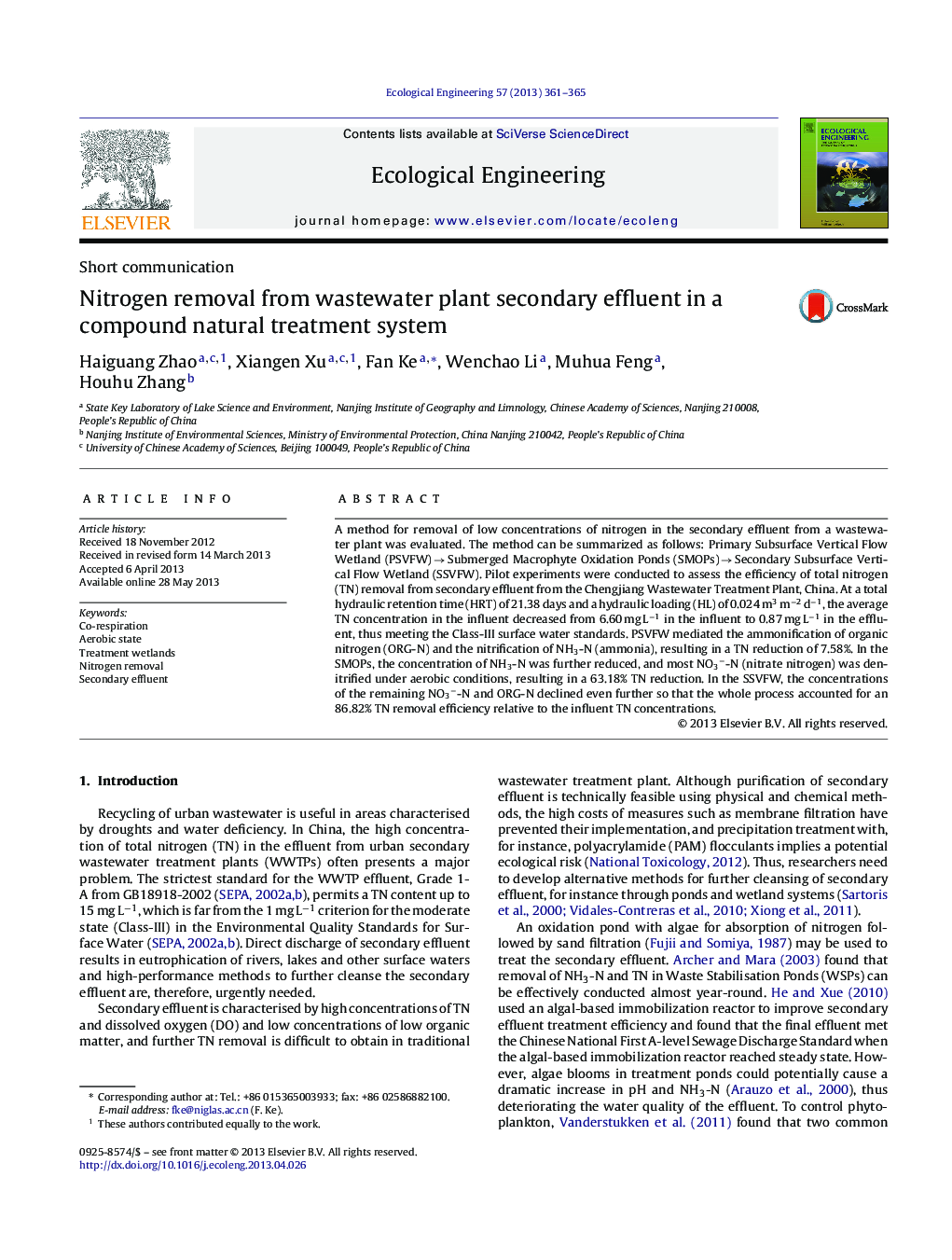| Article ID | Journal | Published Year | Pages | File Type |
|---|---|---|---|---|
| 6302639 | Ecological Engineering | 2013 | 5 Pages |
Abstract
A method for removal of low concentrations of nitrogen in the secondary effluent from a wastewater plant was evaluated. The method can be summarized as follows: Primary Subsurface Vertical Flow Wetland (PSVFW) â Submerged Macrophyte Oxidation Ponds (SMOPs) â Secondary Subsurface Vertical Flow Wetland (SSVFW). Pilot experiments were conducted to assess the efficiency of total nitrogen (TN) removal from secondary effluent from the Chengjiang Wastewater Treatment Plant, China. At a total hydraulic retention time (HRT) of 21.38 days and a hydraulic loading (HL) of 0.024 m3 mâ2 dâ1, the average TN concentration in the influent decreased from 6.60 mg Lâ1 in the influent to 0.87 mg Lâ1 in the effluent, thus meeting the Class-III surface water standards. PSVFW mediated the ammonification of organic nitrogen (ORG-N) and the nitrification of NH3-N (ammonia), resulting in a TN reduction of 7.58%. In the SMOPs, the concentration of NH3-N was further reduced, and most NO3â-N (nitrate nitrogen) was denitrified under aerobic conditions, resulting in a 63.18% TN reduction. In the SSVFW, the concentrations of the remaining NO3â-N and ORG-N declined even further so that the whole process accounted for an 86.82% TN removal efficiency relative to the influent TN concentrations.
Related Topics
Life Sciences
Agricultural and Biological Sciences
Ecology, Evolution, Behavior and Systematics
Authors
Haiguang Zhao, Xiangen Xu, Fan Ke, Wenchao Li, Muhua Feng, Houhu Zhang,
